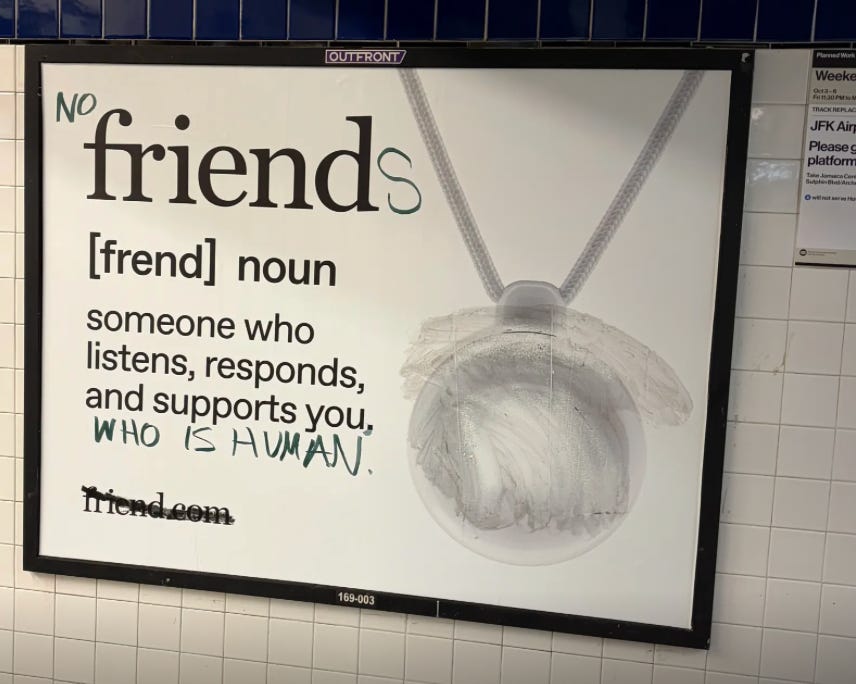AI as the ad and the advertiser
AI companies are going offline to earn trust while their products flood our feeds with more AI content
Last week during New York Advertising week, on a corner in the West Village, Anthropic popped-up the “Claude cafe.” From some of the images it seemed to be analog-coded -- for example baseball hats with “thinking” stitched across them -- and more than 5,000 people lined up.
Elsewhere in subway stations across the city over the last couple of weeks, New Yorkers defaced a million-dollar ad campaign for Friend (paywall), the physical AI-companion startup whose $129 wearable device works to “listen, respond and support” its users.
On The Intersect this week, I spoke to Caroline Giegerich, VP of AI at the Interactive Advertising Bureau, which conducts research and helps to set industry standards for the advertising industry. My goal was to better understand from Caroline how industry executives are navigating the line between craft and slop in advertising.

 Tiktok failed to load.
Tiktok failed to load.Enable 3rd party cookies or use another browser
We’ve been using photoshop for decades … So what makes AI different? Is it that its photorealistic portrayal of people doesn’t actually require a human to appear at the core, and consumers feel deceived by not being made aware of what is “human” and what is “AI?”
As the actual AI companies are staging IRL events and out-of-home activations, they are trying to earn the trust of their customers even as their products generate more and more AI content.
It all just sort of feels … unsettling. Existential.
Tricks in ads are not new -- like fake milk (it was glue) in the iconic “Got Milk?” campaign -- but the scale and invisibility of today’s tooling makes the stakes feel different. Labeling and transparency have to catch up, and it has to be consistent enough that audiences know what they’re seeing.
Caroline’s anchor was that consumers hate feeling deceived, which was true before AI, and is only growing now with these powerful generative tools (re: most coverage of the new Sora 2 release).
As I wrote last week, AI is beginning to feel like microplastics in our content. Taking that further now, one might even assume that AI could be used in every part of the ad creation process (IE ideation, copy, editing, visuals, video, etc.) but that it may be less obvious on the end product.
We tackle this and more in the full episode: ‘Is AI in advertising deceiving us?’



